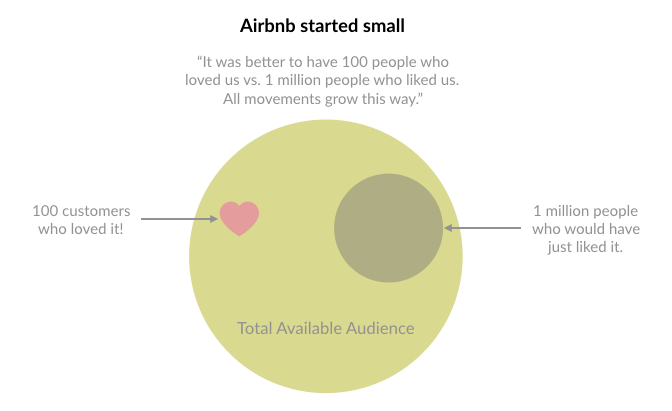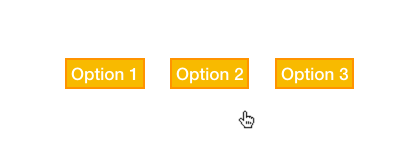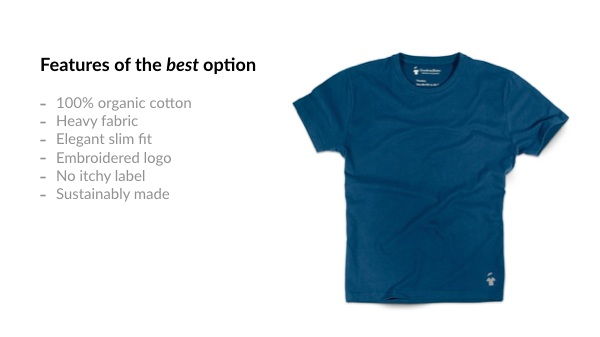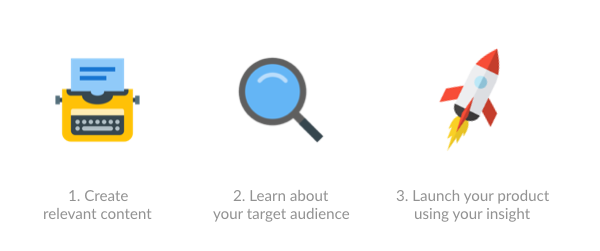We can all agree that:
– Creating something is easy.
– Creating something that people care about (your minimum viable audience) is much more difficult.
The problem?
Most attempts to launch new products are based on a “cool idea for a product”. And then, a marketing team has to figure out how to sell this new concept.

Products are born this way because it’s less demanding to start with a product idea than with what your audience may want.
That’s the wrong way to develop new propositions.
In the words of Seth Godin:
“You don’t find customers for your products. You find products for your customers.”
— Seth Godin
In this article, you’ll learn about the importance of defining your minimum viable market first.
And how to identify it.
A challenge: There’s no such thing as the mass market
It’s tempting to have the ambitious objective to serve a big market–the mass market.
But who’s the mass market? What do they want? What can you do for them?
Who is the average pilot?
In the 50s, the U.S. Airforce was trying to improve the design of the cockpit.

The ambition was to find the size of the average pilot to make sure that every pilot could fit well into a standardised cockpit.
They needed data.
So they gathered the size data from 4,063 pilots and computed the average of the 10 physical dimensions believed to be most relevant for the new design–incl. height, arm length, and chest circumference.
Next, they compared the data size of each individual pilot–one by one–to the average pilot.
The result?
Big surprise!
Out of 4,063 pilots.. well.. not a single airman fit within the average range on all 10 dimensions!
For example, one pilot might have a longer-than-average leg length, but a shorter-than-average arm length.
There was no such thing as an average pilot.
If you design a cockpit to fit the average pilot, you’re actually designing it to fit no one.
Bottom line: Trying to please everyone requires to dilute so much what makes your proposition unique that you’ll end up appealing to nobody.
Interested in the topic?
Get my new book, The Value Mix. There, you’ll find more examples and details on how to identify and target the right market.
A solution: Focus on your Minimum Viable Audience
Creating a meaningful proposition requires to be specific.
If you want to make a difference for the audience that you serve, you must know them well.
The solution is to start by focusing on a Minimum Viable Audience.
Minimum (or Smallest) Viable Audience: A better way of approaching marketing
A minimum viable audience is the smallest possible market you can serve and that can sustain your business as it grows.
It’s about targeting the people who will particularly benefit from what you are offering.

In This Is Marketing, Seth Godin shares his definition of the smallest viable market:
“Begin instead with the smallest viable market. What’s the minimum number of people you would need to influence to make it worth the effort?”
There’s a real advantage:
When you focus on a smaller market, you can make sure you serve them well. You can make a bigger impact on their lives, especially when you’re just launching a new product.
It always starts with a small market: The 100 customers who love Airbnb
Airbnb didn’t start with millions of customers.
They started focusing on making sure they could get 100 customers who loved their proposition.
This was their minimum viable audience.
“It was better to have 100 people who loved us vs. 1 million people who liked us. All movements grow this way. There was no way we could get 1 million people on Airbnb, but we could get 100 people to love us.”
– Brian Chesky, Founder & CEO of Airbnb
Being so specific helped the Airbnb team to create a proposition that people loved.

They didn’t go for the average.
They focused on making a big difference for a small pool of customers.
The rest is history.
If you’re interested in more details about how to find your minimum viable audience, here’s the link to The Value Mix.
It’s about being their best option
When everything is one click away, we only care about the best.

People don’t want an average T-shirt. They want the best T-shirt.
This is what I realised when I started GoudronBlanc in 2012.
But how could I offer the best T-shirt?
I had to pick the smallest viable audience for whom GoudronBlanc would become the best option.
Quickly, I found that there was a group of people–our minimum viable audience–who shared a worldview. They wanted to be able to show up at work wearing elegant T-shirts.
Besides, they also cared about knowing how these T-shirts were made.
(More here about using worldviews to build the story of your brand.)
We were onto something!

We created the best option for our target audience:
Elegant T-shirts made in Europe using organic cotton.
The smaller your viable audience is, the easier it will be for you to be the best at serving them.
How minimum should your minimum viable audience be?
Kevin Kelly argues that an audience of 1,000 True Fans is enough for an independent creative to make a decent living. If each of them spends $100 per year, it’s a total of $100,000 per year.
“One thousand is a feasible number. You could count to 1,000. If you added one fan a day, it would take only three years. True Fanship is doable. Pleasing a True Fan is pleasurable, and invigorating. It rewards the artist to remain true, to focus on the unique aspects of their work, the qualities that True Fans appreciate.”
Kelly refers to solopreneurs. But his idea works for businesses too.

The principle here is to force your focus on a defined number of customers that sounds feasible.
What about the exact number?
It could be 1,000 or 5,000.
The exact number doesn’t matter. What matters is writing down a number that you feel comfortable with.
In Kelly’s words:
There is something important and liberating in seeking a finite attainable number of passionate fans rather than hoping for a rare best-selling career backed by millions of folks who have just heard about you.
The right “minimum” depends on what’s “viable” for you.
Many factors matter. These include price, COGS, potential share of customer, and the size of your business.
Identifying your audience with content
What about starting with an existing… audience?
An increasing number of businesses have used inventive ways to lower market risks. Instead of starting with a product, they start with content.
Case study: Using content to build a minimum viable audience
In 2004, Rand Fishkin started SEOMoz (now called Moz), a blog sharing tips about search engine optimization.
Moz built an audience before launching. The founding team quickly grew a following that trusted them. Their readers were interested in acquiring customers through SEO. The team understood that and started offering SEO consulting services.
By interacting with their minimum viable audience, the Moz team figured out that consulting wasn’t enough. There was an opportunity to build some SEO tools that would help their customers do better SEO. Today, Moz is a successful SaaS business with over $30 millions in revenue.
All that just started as a blog about SEO back in 2004.
Here’s how Rand Fishkin feels with hindsight:
“This is a strategy I’d replicate again, far more intentionally, with any future venture.
(1) The greatest advantage initially seems like it’s the low cost of marketing you’ve generated by having a steady stream of people who already care about the problem you’re trying to solve visiting your site, knowing you, liking you, and trusting you.
(2) But, even more valuable is the deep experience you gain from spending so much time trying to provide value to and earn attention and amplification from the crowd you eventually want to serve.”
Any business can use content to spot emerging trends among a target audience.

It’s also great to learn about your market.
Don Peppers and Martha Rogers, who theorised one-to-one marketing summarise it well in Managing Customer Relationships:
“The enterprise learns more about its own strengths and weaknesses from each interaction and from the customer’s feedback, and is therefore able to market, communicate, and handle some aspects of its own tactics or strategy more efficiently and effectively than was possible prior to the relationship.”
Creating your own media can be an effective way to interact with your audience and learn from their feedback.
And you’ll be better prepared for the launch of new products.
The benefits of gathering your smallest viable audience
Having access to an audience of passionate people who love your content is a real asset.
This was a huge benefit for me when I launched The Value Mix.

Like Rand Fishkin, I had already gathered a group of “true fans”. They’d been following this blog and my newsletter, Progress, for years.
So when I launched The Value Mix?
They trusted me. They knew it would be a good book (for them).
Comments are closed.